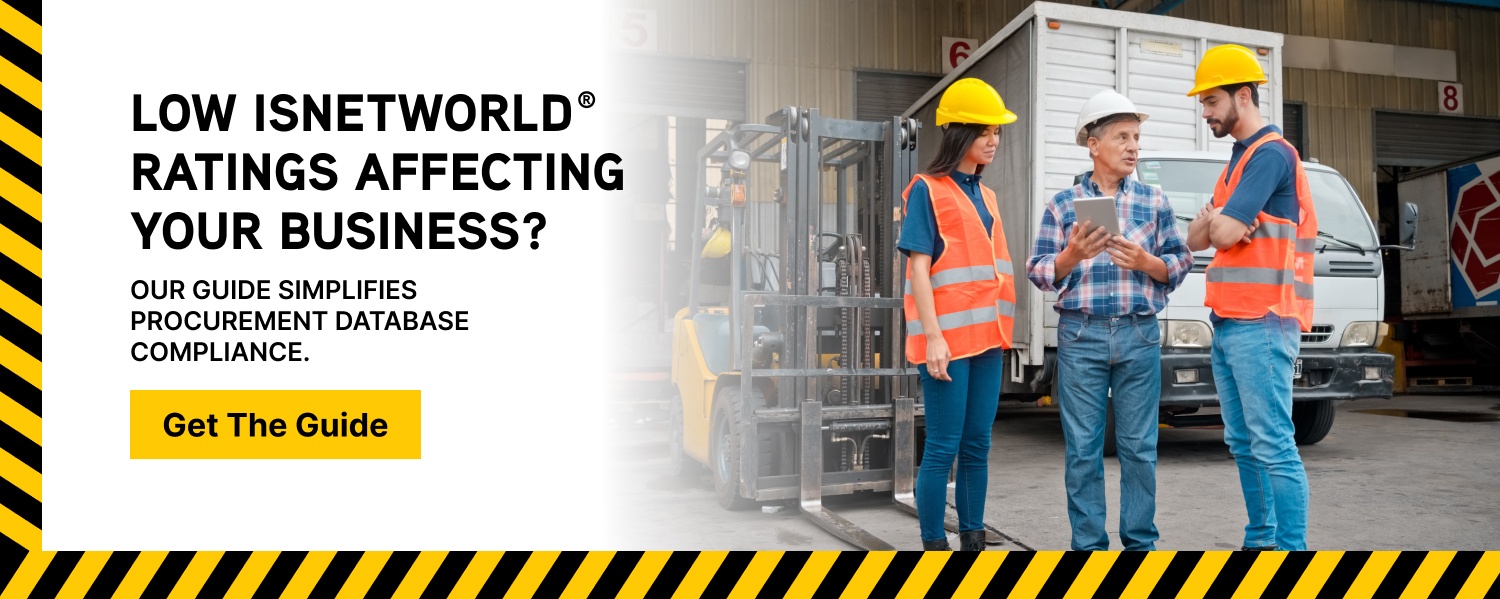If you are a contractor or supplier looking to become Avetta compliant, you may have realized that it can be easier said than done.
Avetta is a leading platform that provides certification and prequalification services primarily for contractors and suppliers who work with client companies that use the Avetta platform for supply chain risk management, usually in industries such as construction, manufacturing, oil and gas, utilities, transportation, and other sectors where supply chain risks need to be managed.
By becoming Avetta compliant, contractors can demonstrate their commitment to providing high-quality services while mitigating customer risks. While Avetta compliance is a win-win for contractors and the companies that hire them, becoming compliant can be lengthy and cumbersome. This article explores the top five Avetta compliance mistakes to avoid and how a safety consultant can help the process run smoothly.
Mistake #1: Not Uploading All Required Documents
It is not uncommon for businesses to make mistakes when uploading required documents in Avetta. Avetta has a vast database of requirements, and each industry has specific documents that must be uploaded to ensure compliance. Failure to upload all required documents can lead to a contractor's or supplier's disqualification, causing delays in operations and financial losses.
Before starting the Avetta compliance process, businesses should familiarize themselves with the compliance requirements specific to their industry. This will ensure all the necessary documents are uploaded correctly. Companies should also ensure that all documents are up-to-date and renewed when required.
Mistake #2: Not Regularly Reviewing Compliance Status
Another common mistake businesses make is not regularly reviewing their contractors' and suppliers' compliance status. Compliance requirements can change, and Avetta's database is updated periodically to reflect these changes. Maintaining compliance status and ensuring contractors and suppliers remain compliant throughout their contracts is essential.
Avetta offers automated alerts and notifications to help businesses monitor compliance status changes. Businesses should use these tools to stay informed and take action when necessary.
Mistake #3: Failing to Follow up with Non-Compliant Contractors
When contractors or suppliers fail to meet compliance requirements, the hiring business is responsible for taking action. However, many businesses fail to follow up with non-compliant contractors, leading to prolonged non-compliance and increased risk.
Businesses should have a straightforward process in place for dealing with non-compliant contractors. This process should include notifying the contractor of the non-compliance, setting a deadline for remediation, and monitoring the contractor's progress. If the contractor fails to meet the deadline or shows no improvement, the business should consider terminating the contract.
Mistake #4: Not Maintaining Accurate Records
Another common mistake businesses make is not maintaining accurate records of contractors' and suppliers' compliance status. Accurate records are key to demonstrating compliance to regulatory agencies, insurance companies, and other stakeholders.
Avetta provides businesses with a centralized platform for storing compliance records, making accessing and sharing information easy. However, companies must ensure the information is accurate and up-to-date. This includes verifying the accuracy of contractor and supplier information and monitoring their compliance status regularly.
Mistake #5: Not Providing Adequate Training to Employees
Finally, businesses often make the mistake of not providing adequate training to their employees on using Avetta and complying with the platform's requirements, which can lead to errors, delays, and non-compliance, ultimately resulting in financial losses and reputational damage.
Businesses should provide their employees with comprehensive training on how to use Avetta and comply with its requirements—from educating employees on uploading documents to monitoring compliance status and following up with non-compliant contractors. Additionally, businesses should have a designated Avetta administrator responsible for overseeing compliance and providing ongoing employee training.
Related Content: Avetta Compliance: Everything You Need to Know
How a Safety Consultant Can Help
A safety consultant can save your company time and money by providing valuable guidance and support throughout the Avetta compliance process. SafetyPro helps contractors identify the specific requirements for their industry and location, prepare the necessary paperwork, and organize the relevant documents.
Additionally, safety consultants can offer insights and expertise on safety policies and procedures to help meet the safety standards required by Avetta.
Furthermore, safety consultants can help avoid common mistakes during the application process by reviewing and verifying all necessary documentation before submission. This can ensure all information is accurate, complete, and up-to-date, reducing the risk of delays or rejection of the application.
Takeaway
Becoming Avetta compliant can greatly benefit contractors, increasing their visibility to potential clients and improving safety practices.
However, the compliance process can be daunting, and a smooth, successful experience relies on avoiding common mistakes. Working with a safety consultant can provide the necessary guidance and expertise to navigate this process effectively.
By taking the time to become Avetta compliant, contractors can enhance their reputation and establish a strong commitment to safety and excellence in their field.


















